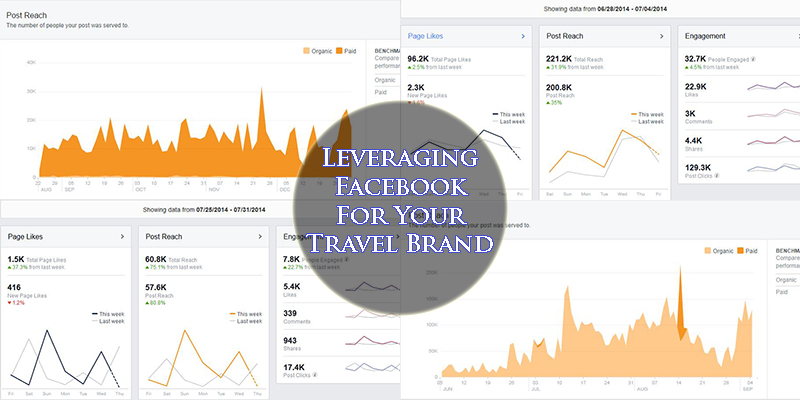
For those of you who didn’t get a chance to catch my presentation at TBEX in Cancun in September, one of the questions at the end from one of the people in attendance was, “does Marginal Boundaries publish the content you are talking about?”
I had to answer no. Which led me to the realization that I need to change this fact. Over the past few weeks I’ve been hard at work behind the scenes developing a new direction and strategy for the content I produce here at the blog. Starting with this article on how to leverage the power of Facebook for your travel brand.
“Facebook doesn’t work”.
“I don’t want to be bullied into paying for views.”
“I shouldn’t have to pay.”
“It’s not fair. It used to be free. Why do I have to pay now?”
If there’s an excuse out there as to why people are failing at Facebook, I’ve heard it. And I get it. I really do. It’s like paying for carry-on luggage with airlines these days. It sucks. It’s an extra fee. We didn’t use to have to pay for it, but now we do. We can bitch and moan all we want, but at the end of the day if we want to fly, we have to pay. Same with gas prices.
If you want to get the most out of the Facebook experience, you have to be prepared to pay to play. To invest in your business. And if you are willing to do so, to put money on the line and ante up to push your business and brand out of the little leagues into the big leagues, you are in for a wild ride.
Facebook is without a doubt the most powerful social media outlet available as of this writing. Twitter, Pinterest, Google+ and Instagram cannot compare to the power of the Facebook system, because none of them offer the highly customizable advertising system that Facebook has built into it and is continually modifying and enhancing.
Make no mistake; the other social media outlets also have advertising systems, with Pinterest currently in public testing, and Twitter just recently made their advertising system publicly available in 2014 (Google+ and Instagram are still testing). But in this regards, Facebook is light years ahead of the rest of the competition, and while it’s coming on the pipeline for every other platform, they still haven’t had years to refine the system that Facebook has.
The biggest complaint that I hear from people regarding Facebook is that they have seen drastic amounts of traffic reduction, and they feel that their posts are no longer visible to their community. They then complain that they shouldn’t have to pay to promote content to viewers who opted in and signed up to follow their page.
Here’s the thing: you don’t have to pay if you don’t want to. If you look at the most successful Facebook communities out there, brands which have tens of thousands and hundreds of thousands of followers, they often have a dedicated following of readers who come directly to their Facebook page to read what they have to say.
They don’t wait around for something to show up in their news feed; instead, they go directly to the Facebook page of their favorite brands and bloggers, consuming the content at the source. And if you want to avoid paying the fees related to advertising and boosting posts, you need to be creating content that is sufficiently engaging and interesting to your audience that they are coming directly to you, rather than waiting for you to come to them (showing up in the news feed).
So the first rule of thumb if you want to avoid paying Facebook fees is simply this: create engaging content.
But what about the fact that the travel blogging market is extremely saturated? How can you possibly compete with the thousands of other bloggers out there who have something very similar to say?
If you are coming along in 2014 and trying to start a Facebook page for your brand, I hate to break it to you, but you’re late to the party. And because you’re late to the party, you got several years of catching up to in comparison to the other bloggers who already been here for 3 to 5 years or more building up their communities and establishing loyalty with their followers.
There’s a way around this issue, and that is through using the paid advertising system on Facebook. If you are a brand-new blog just starting out and you want to make waves right away, the only way that is going to happen is if you’re willing to spend money on publicity.
It’s just like opening up an art gallery or a restaurant. You need to plan months in advance, and you absolutely have to plan for an advertising budget. Not only do you need money to purchase the physical space for your endeavor (or rent it), but you also need money for the inventory, the equipment and, most importantly, the publicity that is going to drive people to your restaurant or art gallery on opening night… and then over the weeks and months following.
Blogging for a living as a business, and you have to treat it accordingly. If the only thing you are willing to do is start a free WordPress blog and use the free version of Facebook, it is going to be very difficult to achieve any sort of quantifiable results. Just as it took the other brands and bloggers several years to build up their communities, it is going to take you the same amount of time… unless you are willing to spend money.
But throwing money at Facebook without actually having a marketing plan and strategy is the most irresponsible thing you can do. The Facebook advertising system is an extremely customizable tool that is exactly like a dentist’s drill; in the hands of a trained professional it is a precision instrument, but in the hands of a child it can put out an eye and cause serious harm.
Launching A New Brand On Facebook
Just the other day I was going over viral campaigns and Internet marketing with my latest assistant and friend. We talked about the girl who created the 100 Days of Dance video, and the fact that her video received 1.8 million views in just three days and was not based on luck, nor the quality of the video, or anything else: it was a forced viral campaign based purely on publicity and advertising.
It was carefully planned out and strategized months in advance. This is Internet marketing. This is content marketing. This is business. If you want to be successful, you not only have to plan ahead, but you also have to be willing to spend money to get there.
The videos were all shot in advance, and the entire marketing campaign was planned out in advance. Once everything was ready to go in terms of content, the advertising campaign was begun, utilizing both press releases as well as media outlets and social media. Most important was the simple fact that all of it revolved around money being spent on the marketing of the content.
Don’t believe me? Heather Anne Carson, PR expert & co-founder at Onboardly, said this of the campaign: “I did a ton of marketing, and it started long before the video was released. Going viral was not an accident — it was work.”
(source: http://www.quicksprout.com/the-beginners-guide-to-online-marketing-chapter-11. Consequently, Onboardly charges a minimum of $10,000 USD per month for their campaigns. Real results cost real money.)
Recently, in a travel blogging Facebook group, a conversation was started about how much to pay for advertising. I mentioned needing to have a 20% to 30% advertising budget to establish brand awareness to get your brand to the point where it’s making 60k-80k a year on the bottom end, and one individual in particular had a conniption fit and said that there was no way she would pay $20,000 for anything, because she has no desire to build the next Amazon or Expedia.
The fact that a $20,000 investment is considered a ludicrous amount of money to the bloggers in these travel blog communities should be the ultimate indicator of where these people are at in terms of professionalism and business savvy. A thriving business costs money to start; more importantly it costs money to continually maintain.
That being said, any money is better than no money at all. When I first started out with the Facebook advertising system I was only spending $50 per month. I ran my split testing for a few weeks on that amount, then I bumped it up to $300 per month for several months, did more split testing, then bumped it up to $500 a month, did more split testing, and so on and so forth.
This was back in the day when the demographic tools were not nearly as enhanced as they are today, plus I was a complete n00b back then, which means my results then pale in comparison to my results from now. But the point is, I had to have money to promote my brand because I was coming into an already crowded marketplace and I needed to establish my voice amongst all of the others.
Going from zero to where I am today, with 14 presentations on social media marketing behind me over the last two years, including keynoting at Last Tuesday in Playa del Carmen and being invited to speak at TBEX, should give you an idea of just how powerful these marketing methods are, when used properly.
None of this happens overnight. Any time someone asks me what they should do if they want to get started as a blogger, I always tell them the first thing is stop whatever they’ve been doing, go back to the drawing board, spend a full year analyzing other bloggers who are doing what they want to do, interning with them, taking workships and learning the craft, and saving up money to launch their business.
If you start a blog without any forethought or planning, if you start slapping up shitty photos and shitty blog posts without any training or journalistic approach, just because you want to earn free travel, you are going to be one of the 99% of bloggers who, as they talked about in the final keynote presentation at TBEX Cancun in 2014, are absolute crap and will never go anywhere professionally. Listen to the talk over at This Week In Travel Episode 174.
You have to have a business plan, you have to have a target audience, you need to know your demographics, and you need to have a content marketing strategy in place. Which means having an advertising budget to manage a publicity campaign to give your brand visibility.
How Much Should I Spend?
The amount of money you are willing to invest in your business will vary by individual. Some people will spend three years saving up enough money to build their dream company. Others will try to do it on the fly while backpacking out of southeast Asia.
The reality is that part-time efforts will result in part-time results. A five dollar a day spend will net you far less than a $50 a day spend. These are just simple facts. The more money you have available to spend on advertising, the better results you will have.
Using the dance videos from earlier in the blog post as an example, the only way to achieve millions of views on a YouTube video within a period of several days, is if you are willing to spend tens of thousands of dollars on advertising. Period.
Virality is not luck. Virality is very rarely based on unique stories, or masterful photos, or craft. Instead, virality is all about how much money you are willing to spend on publicity (or how large your following is/how much visibility the content will receive), and where your content is being marketed.
Let me give you an example. Vin Diesel is the most famous person on Facebook, and has the largest following as of this writing (over 85 million followers). When he posts a photo or asks people to take action, millions follow suit.
The average travel blogger with 10,000 or even 50,000 followers on their page who attempts to take the same course of action will see results on a far lesser scale. Without the visibility of millions of followers, the chance of something going viral are almost nil. But, if you have an advertising budget, you can force something to go viral by spending money to get it in front of the eyes of his many people as possible.
During my presentation at TBEX, I showed how a typical print ad in National Geographic costs 285,000 USD to reach an audience of 4.4 million people internationally within a month. You can achieve those same numbers for around $3,000 USD on Facebook, if you’ve targeted your demographics properly.
Now, you don’t necessarily have the trust or loyalty that National Geographic has, but even if you don’t, the raw numbers are staggering in scope. Even if you only have a 0.5% conversion rate, your CAC (customer acquisition cost) will likely outperform a National Geographic ad, and if you target your demographics correctly, that piece of content can go viral.
The more money you have to spend, the more people see the content. Bottom line.
Targeting Your Audience
One of the most common mistakes I see made by travel bloggers in the various communities I am a part of is spending money on empty traffic. I see people talking about spending $10 here, $25 there, and then bragging about the number of likes and “views” that the post got because they boosted the post.
The boost post feature of Facebook is the most basic and generic component. It is very literally just the tip of the iceberg. And while it can be a powerful tool, it is only as powerful as the knowledge that the person wielding the tool has its in regards to focusing its potential on a given directive.
Traffic without a return on investment is vanity traffic. It is an empty spend. And unless you have an unlimited amount of disposable income, it is the worst possible end result that you want to see for your brand and business.
Losing money = bad. Earning money = good.
Profit is the name of the game. You are the product. You and everything you do with your blog and brand. It doesn’t matter if you are a photographer, writer, public speaker, consultant, graphic designer, web designer, programmer or beyond. Everyone has something that defines them as an expert.
Which means everyone has a potential product or service they can be offering to their community of followers and travel industry businesses, such as hotels, DMOs and beyond. If you are going to be spending money on Facebook advertising, it needs to be focused on generating an income using your skills.
That means targeting the traffic to achieve more than just vanity views. It means research and development, split testing and beyond. It means knowing your demographics, knowing your audience, and knowing how to get them to convert and become customers, not just readers.
And the only way that happens is by taking the time to learn the tools and hone in on your target audience.
The Facebook advertising system is incredibly powerful. It is highly customizable, and allows you to focus on demographics such as age, sex, language, location, behavior patterns, income brackets, relationship status, level of education, traveling habits, and so much more.

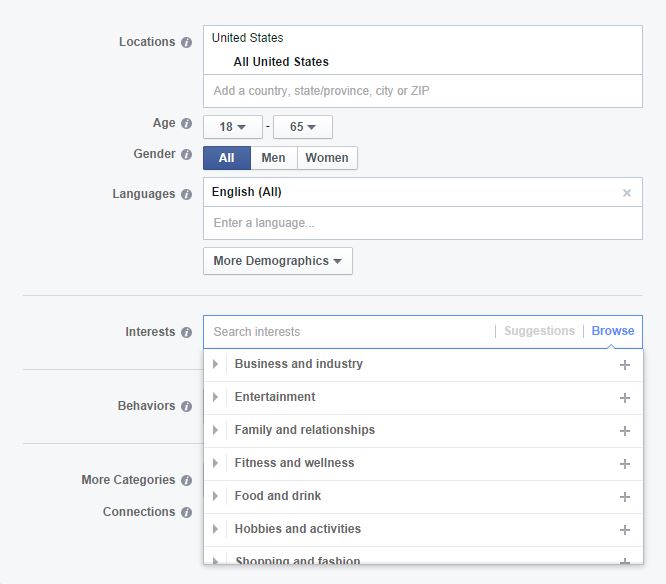
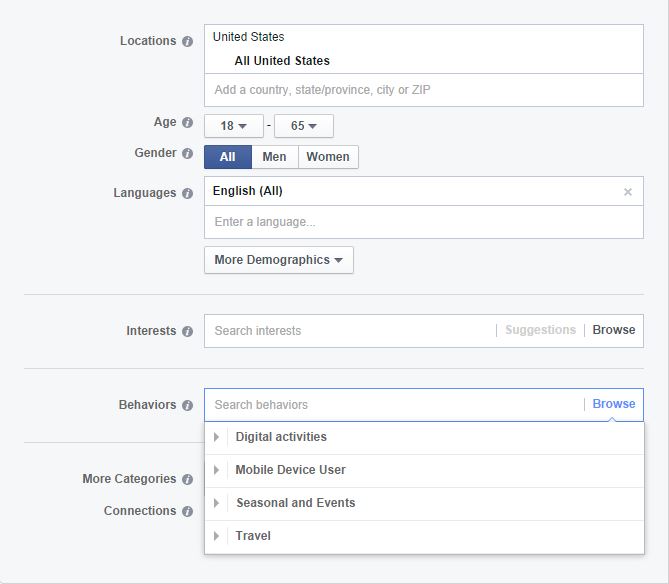
Do you know the spending habits of your target audience? Do you know their income bracket? Do you know what time of the day on what day of the week they are more likely to spend money on a product? Do they prefer e-books in comparison to physical books? Will they purchase a T-shirt or or they more likely to purchase a coffee mug?
Do they like budget travel or are they luxury travelers? When was the last time they traveled? Do they have money to be traveling again? Do they take more than one trip per year? Are they married? Single? Divorced? What are their political views? Do they use their mobile more than desktop? Do they rent? Own? Are they Mexican? American? Canadian? Recently married? Getting married?
There was a story in 2012 over at Forbes regarding how Target figured out a teenage girl was pregnant before even her dad knew. She had been hiding it from her father, but her purchasing habits at the store triggered the system to start sending her coupons for baby clothes, cribs and more, which led to her outraged father confronting the store about “are you trying to encourage my daughter to get pregnant?”
This is targeting. These are demographics. If you want to be successful using an advertising system, you have to know how to track data and use this information to properly target your audience members to guarantee the best ROI possible.
The only way this happens is through research and split testing. Which means having an advertising budget set aside that you can afford use to split test and enough time to gather the necessary data.
Split testing is not an empty spend. This is an investment.
NASA did not send a man to the moon without doing research in advance. They spent decades crunching the numbers, sending unmanned missions into space, and literally spending millions of dollars on research and development until they had it perfect.
You need to know your target audience before you ever spend a penny on advertising. Which means taking that year-long period of time I discussed earlier and researching the audience that you want to focus on. Determine your niche. Find out who you want to write for. Research other bloggers and find out what they are doing; use them as examples, but find ways to be better, to stand out, to be unique.
Social Media Examiner has an excellent blog post on third-party tools that you can use in conjunction with the Facebook advertising system to properly split test. Notice that they spent $15,000 over a period of three months to perform the case study that they based this blog post on.
Nothing in the world of social media advertising and marketing can be done for free. The only way you can gather data is to spend money and time. If you are unwilling to do either of those, you will never achieve the results you desire.
Maximizing Facebook Advertising
Advertising on Facebook without a marketing strategy is like taking a shotgun and aiming it in the general direction of a building that is half a mile away and hoping that one or two of the pellets actually hit the side of it. The closer I am to my target, the more of my pellets will hit. The further away I am, the reverse is true.
With looking at the boost post feature, you should really only be using this to counter the algorithm, which dictates that any outbound link will be penalized and pushed down so that only 1% or so of your community members actually see it in their news feed.
Photos, engagement text, any type of content that keeps people on Facebook, will perform well and a higher percentage of those followers will be able to see that piece of content pop up in their news feed.
Why?
Facebook wants people on their platform because their platform is full of ads and sponsored posts that people are clicking on. Clicking = good. Sending people outside of Facebook = bad, because then people aren’t on the platform clicking the ads. So if you attempt to send them outside of Facebook, you have to pay Facebook to promote that content.
Either way, Facebook makes money.
Once you get over that fact, once you stop being offended by it and realize it is simply the cost of doing business and accessing this powerful tool (much like paying a subscription fee), you will quickly find that there is no substitute for highly targeted advertisements and sponsored posts to generate a maximum CTR, engagement rate, and ROI back at your site.
If you look at the image below, you can see a four month section of a six month campaign laid out. The brand has been around since 2009, but the owners never did anything with it other than use it as a hobby site. In late 2013 they came to one of my Internet marketing courses in Playa del Carmen and in early 2014 I was brought on board to create a product and helm the brand development.
We started the new campaign in May with 65,000 Facebook followers. As of this writing, we are over to 131,000. We more than doubled the Facebook following in four months.
On the far left we have maintenance mode; posting once or twice a day using a generic image or engagement text (we were busy working on creating the product during April-May-June). This is done purely to keep people coming back to the page with regular activity.
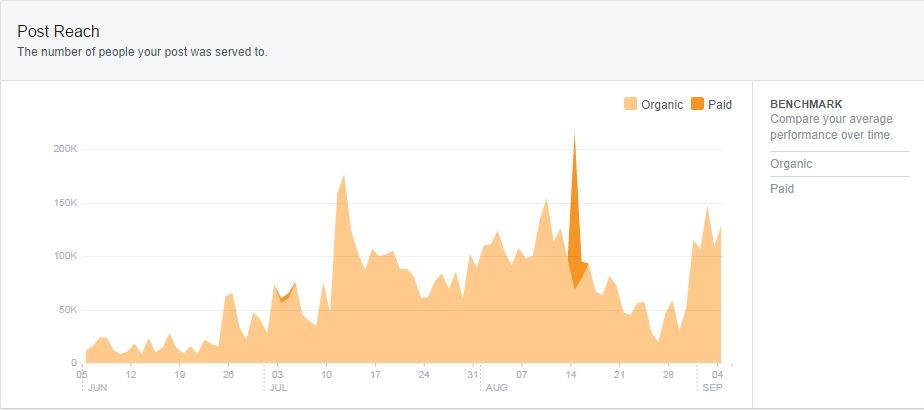
Then you will notice a severe ramp-up. This was a two month period of publicity promoting a new product launching on the 14th of August, 2014. During this promotional period we were posting six times a day using nothing but engagement text and photos; excerpts from the book as well as illustration sketches and development photos.
Then we hit launch day, and you suddenly see a drastic drop in traffic, even on day one. Then from there, you see it continually going lower and lower and lower until suddenly we go from having an average of 90k-100k a day views to barely 30k.
Why?
Because we went from promoting six images and random text updates per day, keeping people on the page and engaged within the Facebook platform, to promoting five or six outbound links every day for a promotional period just after the launch of the book.
Notice that we had an advertising spend on day one. In the days following, we did not spend any additional advertising, and as a result our traffic continued to dive down until we started posting photos and engagement text and stopped linking to outbound sources. Suddenly the traffic jumped right back up as we started promoting the next three products in development for later in 2014; this is the Facebook algorithm at work.
In this next image, you’ll see a pure advertising campaign at work. This is actually from Marginal Boundaries during a 300 USD per month split testing campaign in late 2013; you’ll notice that the traffic numbers were around 15,000 per day paid, and barely a few hundred per day of organic. This was because we were promoting 100% outbound links; there were no photos and no engagement text posted without an accompanying outbound link to a landing page for one of my books, products and services.
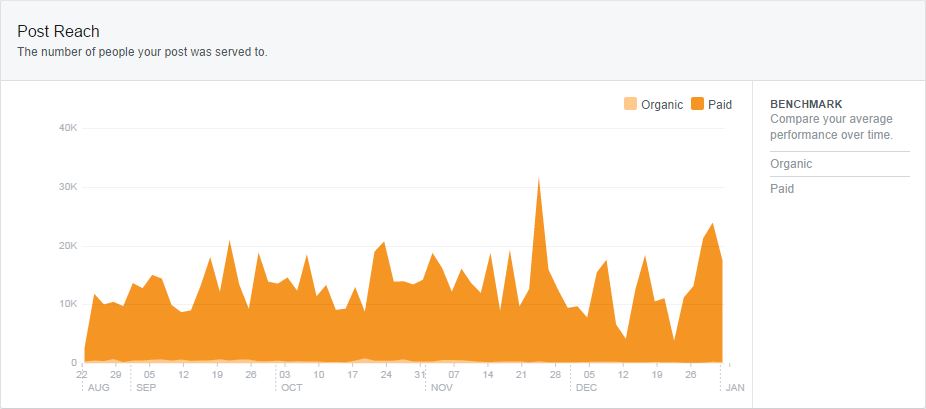
Consequently, I generated a $1,500 – $2,000 per month profit against this spend in book sales and consultations along with a couple of small-scale social media contracts.
I wasn’t worried about on-page (Facebook) engagement or likes or shares or fluffy vanity traffic. Instead, I was focused on 100% outbound links and landing page clicks and sales on the eBooks. The things that matter.
All of this was done working with the advanced targeting features of the Facebook advertising platform. The boost post feature is only used when promoting an outbound link, such as to a blog post or a landing page for a product. When boosting a post, I also generally went into the advertising platform and used the “post engagement” feature to also run a subsequent series of ads pointing back to that same post to receive the highest amount of engagement.
For landing pages I used the “conversion tracking” component, as well as some of the tools previously mentioned in the Social Media Examiner blog post. The “clicks to website” option is fairly generic, but I also used this with some of my generic engagement campaigns.
I did a shitload of landing page split testing as well during this time for the individual books here at the website, heavily promoting The Expat Guidebook, our Cancun guidebook, and Beyond Borders – The Social Revolution (our top three best-sellers).
And we haven’t even started talking about the power of custom audiences yet, of data mining for Facebook IDs and using emails from your newsletter to specifically target individual users on Facebook with your ads. This is where the system really stands apart, but it is a highly advanced form of advertising. If you want to know more, I’ll be talking about the advanced side of custom audiences next week with our newsletter subscribers, so sign up today if you want to catch the next episode.
In Closing
If you are willing to take the time to research your target audience, to determine the demographics, to set aside an advertising budget and work within the power of the Facebook system, you will absolutely kill it with your social media campaign.
However, just throwing money at the boost post system or the advertising system without taking the time to research and gather data is not enough. If you’re going to spend money, make sure you’re going to generate an income from it.
You can still use Facebook without paying for advertising. There are plenty of brands and people who have large followings built up over several years of time and they don’t spend a dime on advertising. But they’ve also had years to build up their campaigns and their audiences; until you do the same, you won’t have the same reach.
I even manage one such campaign, the Spanish language project. It is a five-year-old brand with a dedicated following who check directly at the page for our posts; they do not wait for it to show up in their news feed. As a result, we generally see a 80% to 90% engagement rating on our posts and we are now up to 130,000+ followers and 175k-200k daily views when we are actively posting.
But even with that page, we still augment with paid advertising for product launches and specific outbound links because we want to maximize our profits. This is why Coca-Cola, despite being a household name, still spends money on advertising across every single possible media platform available to humanity: if you want maximum profits, you have to utilize all of the tools in your toolbox.
If you aren’t willing to spend money on a hammer, you won’t be able to build a house.
Stay tuned for the next episode in our ongoing series regarding Internet marketing and social media strategies for travel bloggers who are interested in generating a profit. Join the Business Of Travel Blogging Google+ group for daily updates on the latest social media strategies and tactics, as well as information on podcasting, blogging, vlogging, sponsorships, freelancing, consulting and beyond.
I’m also currently working on a massive Facebook case study for the months of October, November and December that will be publishing in January of 2015 alongside a podcast where we will be covering everything related to for-profit travel blogging, with a heavy focus on social media marketing and management. For more updates, and to catch the follow-up to this post talking about the advanced side of custom audiences, sign up for our newletter, which is where the good stuff happens!

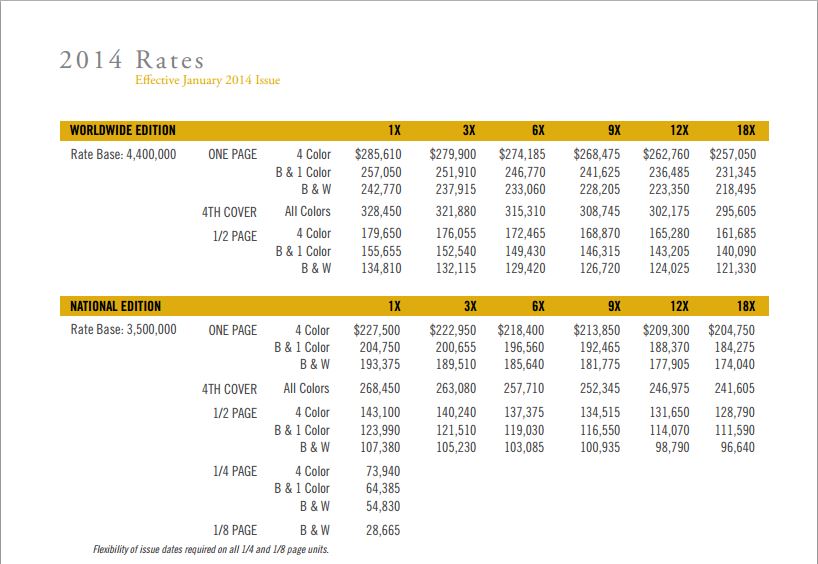
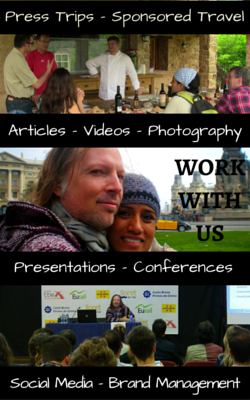
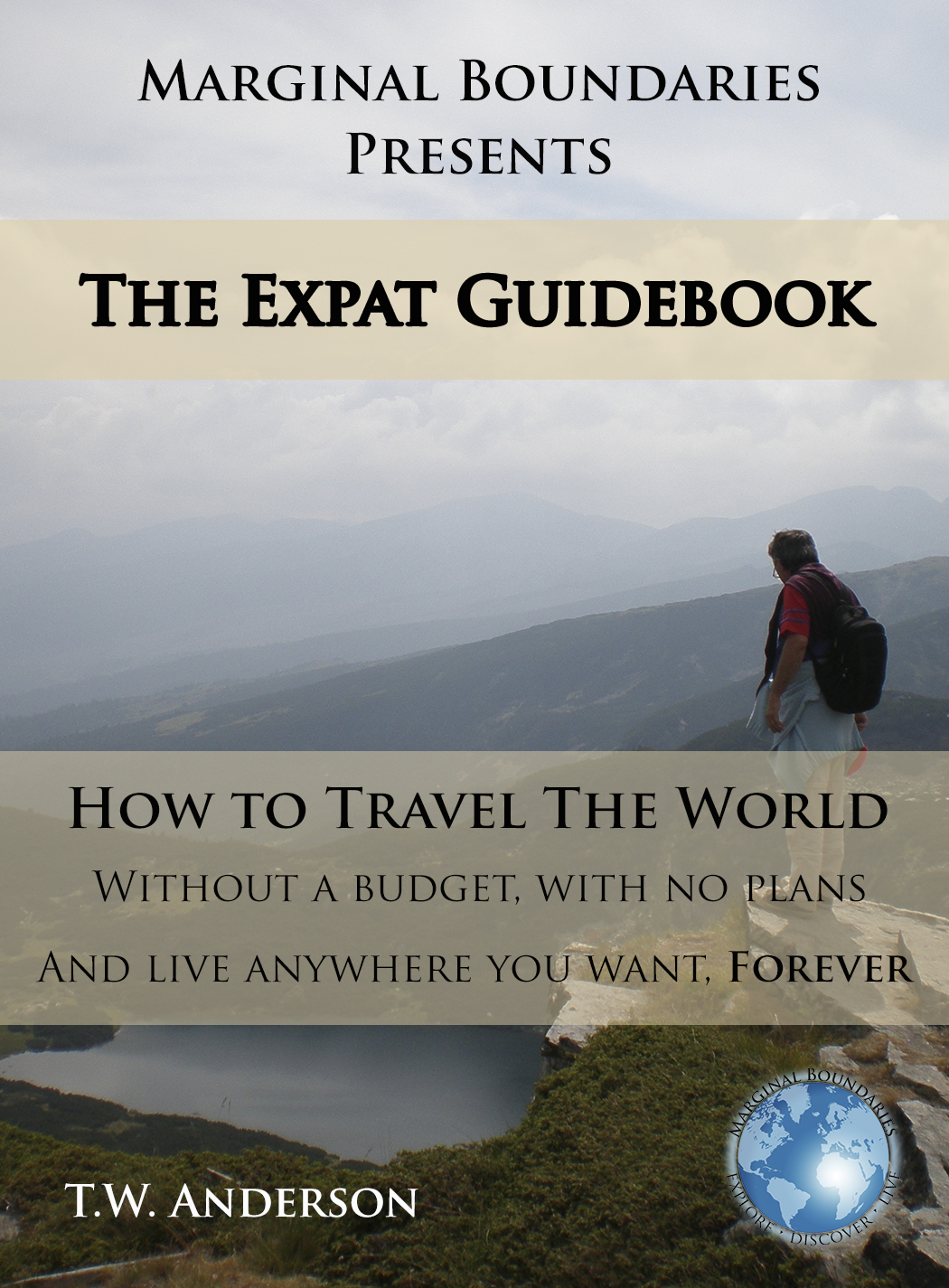



Cheers, Mary. Targeted demographics are soooooo huge.
Very useful post on using Facebook! Funny Target story, but the point it makes is so true! Thanks for sharing this with us!
@ Dave and Veronica from GyspyNesters: EXCELLENT news I saw the photo promos the other day…looking great!
I saw the photo promos the other day…looking great!
Great stuff Tim, thanks. We will be adjusting our Facebook strategy accordingly as we gear up for the release of our book.
Cheers, Tony Glad you found it useful and hope to see more of you around!
Glad you found it useful and hope to see more of you around!
Tim, found you via that TBEX post, checked out your site etc. and now reading this epistle convinces me that at last I’ve found someone who understands the business side of travel blogging. Or really, the business side of marketing any site.
I found your information both illuminating and educative, and that’s pretty rare in the travel blogging area, at least in my limited experience. So I’m looking forward to hearing more from you in the future, and perhaps contributing my 2 cents worth where relevant.
For my sins, I used to be the CD of an ad agency, so to some degree I know what I’m talking about (although that’s not to say that my own practice is up to scratch, especially in respect of social media use!).
More strength to your arm,
Tony
Cheers, Kenin; there’s a lot more of this type of content coming down the pipeline. Appreciate the shout-out!
Bookmarked for multiple re-readings. Great stuff as usual Tim!